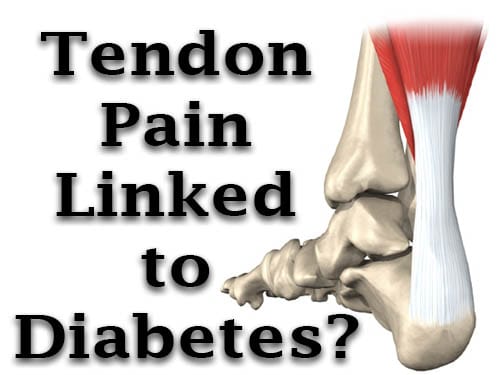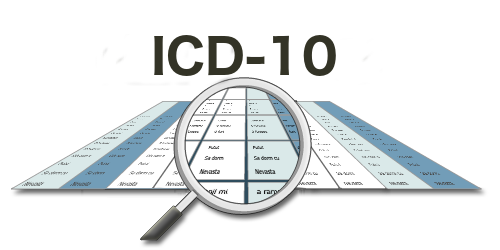
The tendons connect muscle to bone or to specific structures or organs—for example, the eye. Tendons are flexible but non-elastic cords made up of a specific type of protein, collagen. Tendons function to assist movement Examples of tendons include shoulder tendons (Teres minor, Infraspinatus, Supraspinatus and Subscapularis tendons); tendons in the arms (Deltoid, Biceps, Triceps, Brachioradialis, and Supinator tendons); wrist tendons (Flexor carpi radialis, Flexor carpi ulnaris, Extensor carpi radialis and Extensor carpi radialis brevis tendons); tendons in the hips and legs (Iliopsoas, Obturator internus, Adductor longus, brevis and magnus tendons and gluteus maximus/medius tendons; quadriceps, hamstrings and Sartorius tendons). There are also numerous tendons in the hands and feet including the Achilles tendons at the ankles.
In Type 2 Diabetes (T2D), there are a number of tendon conditions that can be relatively common. For example, about 10-15% of people with T2D have Dupuytren’s contracture, a thickening, shortening and fibrosis of the tendons of the hand and trigger finger (also called flexor tenosynovitis). These conditions are usually associated with poor blood sugar control as well as by how long someone has been diagnosed with T2D (and T1D, by the way).
The tendons can be covered by a sheath or non-covered. In tendons with a sheath (a thin, fibrous covering), the general term for inflammatory conditions is tenosynovitis while in those tendons without a sheath, the general term for inflammation is tendinitis. The most common conditions of tendons are:[1]
- Rotator cuff tendinopathy: The rotator cuff is located at the shoulder and allows the shoulder to rotate so that humans can throw, lift objects over the head and raise the arms. The tendinopathy may be due to tears on the tendon or it may be due to inflammation.
- Bicipital tendinopathy: this tendon (the bicipital tendon) is also located at the shoulder and helps bend the arm at the elbow.
- Both rotator cuff tendinopathy and bicipital tendinopathy are commonly repetitive injuries—injuries due to the same motion requiring repeated motions such as lifting over the head and raising the arms repeatedly, particularly if these motions require an awkward body position.
- Lateral epicondylitis (Tennis elbow) is an inflammation of the tendon of the elbow that attaches some forearm muscle to the outside “bump” of the elbow.
- Tennis elbow got its name because of the repeated and often forceful motions of the elbow in tennis, but tennis players are not the only ones to suffer from this form of tendinitis. People with diabetes are also at higher risk.
- Flexor tendinopathy is a condition of the tendons at the palm side of the wrist and hand.
- Extensor tendinopathy is a disorder of the tendons at the back side of the hand and wrist.
- Flexor tenosynovitis is an inflammation of the tendon sheaths in the palm side of the wrist and hand.
- Extensor tenosynovitis is an inflammation of the tendons at the back of the hand and wrist.
- De Quervain's disease is an inflammation of the tendon sheaths at the base of the thumb.
- Dupuytren's contracture is a condition where the tissues (fascia) under the skin on the palm of the hand thicken and shorten. When the fascia shorten, they pull on the tendons connected to the fingers and the fingers cannot move easily or freely. Chronic contracture leads to a non-inflammatory degeneration of the tendons in the palm of the hand.
- Hand and wrist tendinpathy is commonly associated with assembly line work, knitting, typing and piano playing and even excessive cell phone texting (particularly De Quervain’s disease.)
- Achilles tendinopathy and Achilles tears
- The Achilles tendon connects the heel to the calf muscles. Injury can be caused by overuse, sports injuries and due to metabolic disorders such as T2D. The pain associated with tears and tendinopathy is often progressive—and tendinopathy, especially if not treated, can lead to tendon rupture.[2]
Symptoms are commonly pain, redness and swelling at the specific tendons—symptoms also include restricted and painful movement of the joint. Diabetic patients are at higher risk for these tendon conditions, likely because of the inflammation that is consistent with high blood sugar levels. For diabetic patients working at any types of work listed, the risk is significantly increased. The risk of tendon disorders also increases in diabetic patients who also have diabetic neuropathy.
For more diabetes related articles read the following:
How are Tendons Damaged in Diabetes?
The current accepted thinking is that poor glycemic control— chronic high levels of blood sugar—cause the formation of advanced glycation end products or AGEs.[3] The AGEs are a diverse set of molecules such as proteins, fats and nucleic acids such as those found in DNA with glucose (blood sugar) attached.
One example of an AGE that is followed in diabetes is A1c. The critical characteristic of AGEs that can cause tendon (and other) damage is that they can form chemical cross-links, particularly between proteins.[4] Think of it as the difference between ropes that are tangled with each other and all knotted up—these ropes aren’t useful anymore, are they? Similarly, when proteins and other molecules become cross-linked—they lose their function.
In addition to AGEs causing cross-linking damage, the AGEs activate pro-inflammatory pathways, increasing oxidative stress and inflammation.3 This increased oxidative stress and inflammation directly and indirectly damages the tendons, resulting in the symptoms experienced by the patient. Another effect of the AGEs is to decrease blood flow to the tendons—this accelerates the damage.
A recent meta-analysis —a study looking at a large number of studies and analyzing the data from all the studies as a large pool—looking at 31 studies found strong evidence that diabetes was a risk factor for tendinopathy and that this was of significant clinical importance because tendon and joint pain could decrease the ability and the desire of people with diabetes to continue with their exercise program. [5]
Another recent meta-analysis also found that higher cholesterol levels are also associated with an increased risk tendon pain and damage.[6]
I also recommend additional links for more information:
What Can You Do to Prevent Tendon Pain?
There are a number of things you can do to help prevent tendon pain and damage—and, as always, it all centers on maintaining control of your blood sugar levels. This is probably the single most important factor because all the damage in the tendons appears to be caused by high blood sugar levels.
The second thing that you can do is keep exercising—you don’t want to exercise so hard or so aggressively that you damage or tear the tendons, but you definitely want to keep moving. Always stretch gently before you begin any exercise program and if you notice any pain, tenderness or swelling, don’t let it go, treat it! Treat it at first with rest and with ice packs—and if the pain or tenderness continues, see your physician. Exercise also helps increase and maintain blood flow—and this is of course, necessary, in order to maintain tendon health.
Finally, keep drinking water and keeping yourself hydrated. Hydration helps maintain tendons and joints and helps to flush out toxins, and the normal by-products of biochemical reactions.
Tendinopathies and tendinitis can also be treated with NSAIDs and prescription pain medications. In serious cases, anti-inflammatory steroids can be injected directly in the area of the tendon. Physical therapy and massage can be very helpful as well.
If there are calcium deposits on the tendons—which can happen in chronic tendinitis, extracorporeal shock wave therapy (ESWT) can also be used. ESWT is usually done with sound waves which can break up calcium deposits. Surgery is usually the last option used, but it can be beneficial in correcting tears and ruptures in tendons.
TheDiabetesCouncil Article | Reviewed by Dr. Christine Traxler MD on June 04, 2020
References
- https://www.ccohs.ca/oshanswers/diseases/tendon_disorders.html
- http://uconnsportsmed.uchc.edu/injury/lowerleg/
- http://www.medscape.com/viewarticle/781970_2
- http://clinical.diabetesjournals.org/content/21/4/186
- http://bjsm.bmj.com/content/early/2015/11/22/bjsports-2015-094735.short
- http://bjsm.bmj.com/content/49/23/1504





